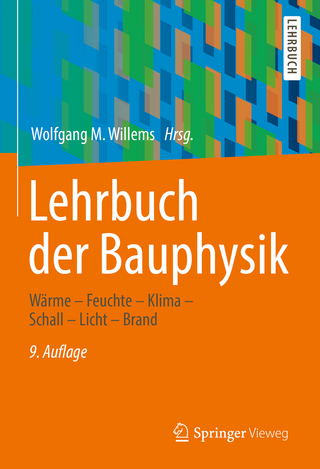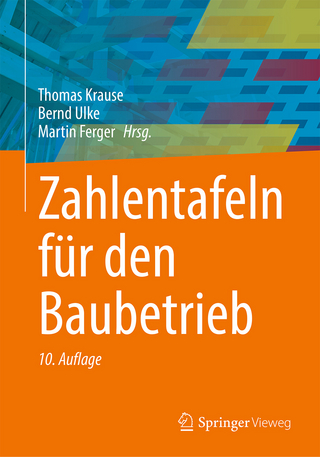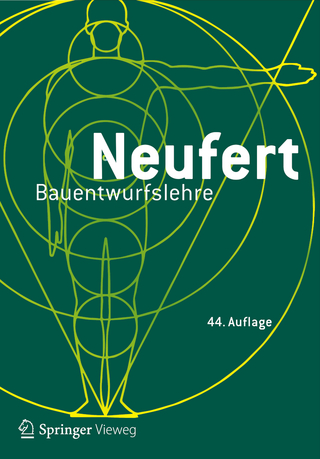
Proceedings of 2021 4th International Conference on Civil Engineering and Architecture
Springer Verlag, Singapore
978-981-16-6931-6 (ISBN)
Dr. Thomas Kang is a professor in the Department of Architecture and Architectural Engineering and the director for Engineering Education Innovation Center at Seoul National University, Korea. Prior to that, he was a professor in the School of Civil Engineering and Environmental Science at the University of Oklahoma, Norman, OK, USA. He has held various affiliated positions in the USA and Japan, including an adjunct professor at the University of Oklahoma, an adjunct professor at the University of Illinois at Urbana-Champaign, and the lecturer at UCLA, the University of Hawaii at Manoa and the University of Tokyo. Prof. Kang received his PhD from UCLA, his MS from Michigan State University, and his BS from Seoul National University. Prof. Kang is a fellow of Post-Tensioning Institute (PTI) and a fellow of American Concrete Institute (ACI). Prof. Kang received the Kenneth B. Bondy Award for Most Meritorious Technical Paper as Lead Author from PTI in 2012, and the Wason Medal for Most Meritorious Paper as a lead author from ACI in 2009 with the subject of post-tensioned concrete. Prof. Kang is an editor-in-chief for three journals: Wind and Structures, Journal of Structural Integrity and Maintenance, and Advances in Computational Design, and an associate editor for PTI Journal of Post-Tensioning Institute. Prof. Kang published more than 150 international journal papers and more than 150 international conference proceedings, including 50 in ACI Structural Journal and 10 in PTI Journal. He has chaired many sessions/symposiums of structural engineering; delivered many keynote/invited speeches; and organized international conferences/workshops as a chair. Additionally, Dr. Kang has done a lot of practice as a consulting engineer in Korea and the USA prior to joining the academia, he had a working experience in California, USA (e.g., John A. Martin & Associates) and was a licensed Professor Engineer (PE) in California. Prof. Youngjin Leeis currently a faculty of the Boston Architectural College in Massachusetts, USA, and a senior associate at Sasaki Associates, Inc. in Massachusetts, USA as a licensed architect with 18 plus years of experience. He received a BS (1998) in Aeronautical Engineering from Seoul National University, Korea, a BS (2000) in Architecture from the same school, and an M.Arch (2007) from School of Architecture at Yale University, U.S. Prof. Lee is a member of the American Institute of Architects (AIA), a member of Boston Society of Architects (BSA), a member of US Green Building Council (USGBC), and a member of Architectural Institute of Korea (AIK). He is also a peer reviewer of international journals including Nexus Network Journal and Architectural Research and a research project reviewer of National Research Foundation of Korea. Prof. Lee’s research stems from his experience in both academia and practice, and efforts to improve design methodology, which offers design possibilities through integrative design media and generative algorithms. He has published in many journals including Architectural Research, Journal of Asian Architecture and Building Engineering, Automation in Construction, Nexus Network Journal, and Advances in Computational Design, and presented his works at International Conference on Sustainable Building Asia 2016, AIA Conference on Architecture 2017, and ASHRAE 2017 Building Performance Analysis Conference.
Chapter 1. Stability Analysis Using the Finite Element Method of a Slope in the Virgen de Fátima Sector of the San Juan de Lurigancho District of Lima, Peru.- Chapter 2. The Environmental Performance of Earth Construction Systems in Jordan’s Mediterranean Climatic Zone.- Chapter 3. Measuring the Impact of Pedestrian Flow on Vehicle Delays for A Proposed DLT Intersection with Two Displaced Left Turns in An Urban Commercial Area.- Chapter 4. Identification of Black Spots on Bekasi City Roads.- Chapter 5. The Vibration Attenuation Properties of Locally Resonant Track Bed for Subway Engineering.- Chapter 6. Vibration Analysis on a Railway Bridge Structure.- Chapter 7. Investigation on Effective Charging Time of Electro-Osmotic Consolidation for Marine Clayey Soils.- Chapter 8. Cost Study of Construction of a 10-storey Building in Different Seismic Zones according to Modern Seismic Codes.- Chapter 9. Importance of Shear Wall to Control Deflection and Drift of RC Buildings for Different Earthquake Zones with Respect to Aspect Ratio.- Chapter 10. Investigations of the Microstructure of the Contact Zone between Bricks and Masonry Mixtures in Seismic Regions.- Chapter 11. Numerical Study of the Tensile Experiments Modelling the Elongation Degree of Highly-reinforced Extreme Edges of Seismic Walls for Studying the Transverse Buckling Phenomenon.- Chapter 12. Comparative Study on Dynamic Response of Square Section RC-Members and CFRP-Reinforced Members under Unequal Transverse Impact Loading.- Chapter 13. Influence of Fiber on the Strength Characteristics of Fine-grained Concrete.- Chapter 14. Experimental Study on Concrete Spalling of Post-tensioned Concrete One-way Slab.- Chapter 15. Influence of the P-delta Effect and Stiffness Irregularity on the Structural Behavior of Reinforced Concrete Buildings.- Chapter 16. Performance Evaluation of Glass Fiber Reinforced Concrete.- Chapter 17. Influence of the Use of Recycled Coarse Aggregates on the Compressive Strength for the Production of Concrete of 350 kg / cm2.- Chapter 18. Implementation of 3D Concrete Printing Technology in Precast Concrete Mass Production Industry.- Chapter 19. The Effect of Biochar on Properties of Sulphate Resisting Concrete.- Chapter 20. Characteristics of Concrete Made with Treated Domestic Wastewater.- Chapter 21. Corrosion Behavior of Hot-dip Al Coating Contact with Concrete during Hardening Process of Concrete.- Chapter 22. Experimental Study on the Use of Plastic Waste as Natural Aggregate Replacement in Pervious Cement Concrete.- Chapter 23. Research on Optimal Design Strategy of Sport Building Facade in Cold Region based on Intelligent Interaction.- Chapter 24. Bond Load-Slip Behaviors of Strand Assemblies-in-Cement.- Chapter 25. Dynamic Analysis of Bridge Pier Considering Hysteresis Characteristics of High Damping Rubber Bearings.- Chapter 26. Bending Analysis of Continuous Slab Plates in Two Directions.- Chapter 27. Utilisation of Organic Waste Materials as Biocover for Landfill.- Chapter 28. Daylighting Comfort of Verandah in a Traditional House, Thailand.- Chapter 29. Vernacular Passive Strategies for Sustainable Houses in the Andean Ecuadorian Context.- Chapter 30. Building Technology Sustainablism- New Vision.- Chapter 31. Embodied Energy and Embodied GHG of Architectural Works on Low-Cost Apartment Construction in Indonesia.- Chapter 32. A BIM-based Method for Building Energy Intensity (BEI) Evaluation.- Chapter 33. Public Utilization of Rooftop Garden at Commercial Buildings in Hot and Humid Climate.- Chapter 34. Chronological Development of Physical Planning of Hospital in Bangladesh.- Chapter 35. Reinterpretation of the Identity of East-European Cities’ Riverside Territories (on the example of the historical center of Uzhhorod, Ukraine).- Chapter 36. Classifying Essential Morphological Characteristics to Understanding Urbanity in the Old Town of Chiang Mai.- Chapter 37. Integrated space in Low-Income Housing in Kuala Lumpur.- Chapter 38. Application of UAV-based Oblique Photography in Architectural Design: the Case of Mengyuan Resort Hotel in China.- Chapter 39. A Classification Urban Precinct Ventilation Zones using Key Indicators of Spatial Form: Case Study in Bangkok.- Chapter 40. Updating Healthy City Variables for the Post-pandemic Era using Delphi Method.- Chapter 41. The Association of Neighborhood Aesthetics With Physical Activity in Gated and Non gated Neighborhoods in Developing Countries.- Chapter 42. Urban Transformation Processes in Post-industrial Agglomerations (on the example of Drohobych agglomeration in Ukraine).- Chapter 43. Management of Flood Risk with Spatial Planning in the Sri Lankan Context.- Chapter 44. VPL Prototypes for Determining Disassembly Parameters of BIM Models.- Chapter 45. Accuracy of Digital Photogrammetric Survey from Aerial Images for Architectural Documentation in a Monuments: A Case Study of Wat Sing Sam Khok, Thailand.- Chapter 46. A BIM-based Method to Automate Material and Resources Assessment for the Green Building Index (GBI) Criteria.- Chapter 47. Formation of Ph.D. Construction Management Research Question or Problem in Mixed Method (Qualitative and Quantitative).- Chapter 48.- Use and Application of Symbolic Solar Lighting in Mayan and Incan Architecture. a Literary Review.- Chapter 49. The Performance of Multinational Foreign Labours at Construction Project in Klang Valley, Malaysia.- Chapter 50. Investigating the Causes of Disputes from the Perspective of Project Characteristics.- Chapter 51. Post-Pandemic Project Change Management Model: An Adaptable Framework utilizing Levenberg-Marquardt Algorithm and Dynamic Causal Loop Diagram for Construction Innovation.- Chapter 52. Application of BIM Technology in the Formulation of Building Projects in Peru - 2020.- Chapter 53. Expressions of Local Identity via Architectural Practice in UNESCO World Heritage Sites.- Chapter 54. Sustainable Construction of Wetland Stilt House in Indonesia.- Chapter 55. The Architecture of Dutch East Indies Colonial Quarantine Station in Onrust Island (1911-1933).
| Erscheinungsdatum | 04.02.2022 |
|---|---|
| Reihe/Serie | Lecture Notes in Civil Engineering ; 201 |
| Zusatzinfo | 270 Illustrations, color; 82 Illustrations, black and white; XIV, 643 p. 352 illus., 270 illus. in color. |
| Verlagsort | Singapore |
| Sprache | englisch |
| Maße | 155 x 235 mm |
| Themenwelt | Technik ► Architektur |
| Technik ► Bauwesen | |
| Schlagworte | Architectural Design and Planning • Architectural Theories • Civil Engineering • Geotechnical Engineering • Structural engineering • Water and wastewater treatment |
| ISBN-10 | 981-16-6931-7 / 9811669317 |
| ISBN-13 | 978-981-16-6931-6 / 9789811669316 |
| Zustand | Neuware |
| Haben Sie eine Frage zum Produkt? |
aus dem Bereich


